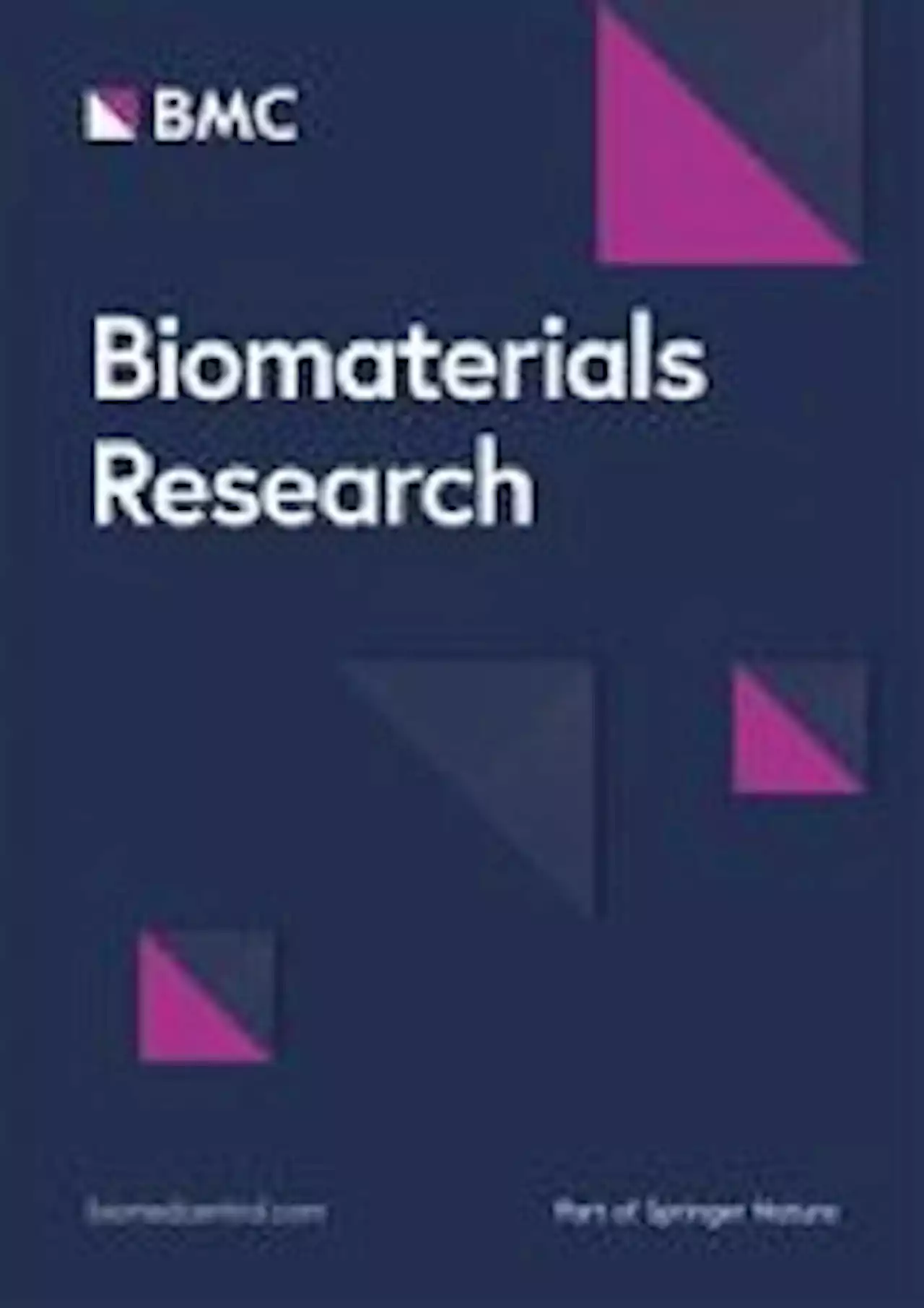3D bioprinting technology developed for cancer immunotherapy
]. The hydrogel was incubated for 30 min and centrifuged to obtain 3D cultured cells. The cytotoxicity was investigated using a calcein-AM-based assay. Target cancer cells were stained with calcein-AM for 1 h at 37 °C. The labeled target cells and NK92 cells were placed in 96-well round-bottom plates at effector-to-target ratios of 2:1 and 1:1 for 4 h. The maximum release was measured by adding 4% Triton X-100 to the target cell.
Cytokine release, which affects the target, was measured using an ELISA. The supernatant of the tumor cell media co-cultured with NK cells was collected, and the concentration of released cytokines was investigated. An ELISA kit was used according to the instructions of the manufacturer.The cells were washed with FACS buffer and centrifuged to obtain cell pellets. The cell pellets were stained with antibodies for 30 min and analyzed by fluorescence-activated cell sorting .
Belgique Dernières Nouvelles, Belgique Actualités
Similar News:Vous pouvez également lire des articles d'actualité similaires à celui-ci que nous avons collectés auprès d'autres sources d'information.
 Oxfordshire firefighters rally over zero fire experience boss plansUnder a new direct-entry scheme, the station manager requires no background in the fire service.
Oxfordshire firefighters rally over zero fire experience boss plansUnder a new direct-entry scheme, the station manager requires no background in the fire service.
Lire la suite »
 Sniffer dogs can identify lung cancer patients from breath and urine samples - BMC CancerBackground Lung cancer is the most common oncological cause of death in the Western world. Early diagnosis is critical for successful treatment. However, no effective screening methods exist. A promising approach could be the use of volatile organic compounds as diagnostic biomarkers. To date there are several studies, in which dogs were trained to discriminate cancer samples from controls. In this study we evaluated the abilities of specifically trained dogs to distinguish samples derived from lung cancer patients of various tumor stages from matched healthy controls. Methods This single center, double-blind clinical trial was approved by the local ethics committee, project no FF20/2016. The dog was conditioned with urine and breath samples of 36 cancer patients and 150 controls; afterwards, further 246 patients were included: 41 lung cancer patients comprising all stages and 205 healthy controls. From each patient two breath and urine samples were collected and shock frozen. Only samples from new subjects were presented to the dog during study phase randomized, double-blinded. This resulted in a specific conditioned reaction pointing to the cancer sample. Results Using a combination of urine and breath samples, the dog correctly predicted 40 out of 41 cancer samples, corresponding to an overall detection rate of cancer samples of 97.6% (95% CI [87.1, 99.9%]). Using urine samples only the dog achieved a detection rate of 87.8% (95% CI [73.8, 95.9%]). With breath samples, the dog correctly identified cancer in 32 of 41 samples, resulting in a detection rate of 78% (95% CI [62.4, 89.4%]). Conclusions It is known from current literature that breath and urine samples carry VOCs pointing to cancer growth. We conclude that olfactory detection of lung cancer by specifically trained dogs is highly suggestive to be a simple and non-invasive tool to detect lung cancer. To translate this approach into practice further target compounds need to be identified.
Sniffer dogs can identify lung cancer patients from breath and urine samples - BMC CancerBackground Lung cancer is the most common oncological cause of death in the Western world. Early diagnosis is critical for successful treatment. However, no effective screening methods exist. A promising approach could be the use of volatile organic compounds as diagnostic biomarkers. To date there are several studies, in which dogs were trained to discriminate cancer samples from controls. In this study we evaluated the abilities of specifically trained dogs to distinguish samples derived from lung cancer patients of various tumor stages from matched healthy controls. Methods This single center, double-blind clinical trial was approved by the local ethics committee, project no FF20/2016. The dog was conditioned with urine and breath samples of 36 cancer patients and 150 controls; afterwards, further 246 patients were included: 41 lung cancer patients comprising all stages and 205 healthy controls. From each patient two breath and urine samples were collected and shock frozen. Only samples from new subjects were presented to the dog during study phase randomized, double-blinded. This resulted in a specific conditioned reaction pointing to the cancer sample. Results Using a combination of urine and breath samples, the dog correctly predicted 40 out of 41 cancer samples, corresponding to an overall detection rate of cancer samples of 97.6% (95% CI [87.1, 99.9%]). Using urine samples only the dog achieved a detection rate of 87.8% (95% CI [73.8, 95.9%]). With breath samples, the dog correctly identified cancer in 32 of 41 samples, resulting in a detection rate of 78% (95% CI [62.4, 89.4%]). Conclusions It is known from current literature that breath and urine samples carry VOCs pointing to cancer growth. We conclude that olfactory detection of lung cancer by specifically trained dogs is highly suggestive to be a simple and non-invasive tool to detect lung cancer. To translate this approach into practice further target compounds need to be identified.
Lire la suite »
 Foot doctor 'practised on patients up until he died' despite watchdog banA chiropodist has reportedly passed away, over a year after being struck off from his profession and continuing to practice
Foot doctor 'practised on patients up until he died' despite watchdog banA chiropodist has reportedly passed away, over a year after being struck off from his profession and continuing to practice
Lire la suite »
 NI stroke patients being 'badly let down' by lack of progress on Action PlanAccording to the Stroke Association, the continuing delay means opportunities to save lives and improve outcomes for patients and staff are being missed
NI stroke patients being 'badly let down' by lack of progress on Action PlanAccording to the Stroke Association, the continuing delay means opportunities to save lives and improve outcomes for patients and staff are being missed
Lire la suite »
 Mixed strain pathogen populations accelerate the evolution of antibiotic resistance in patients - Nature CommunicationsHere, Caballero et al. provide an in depth characterisation of patients colonized with single or mixed strains of Pseudomonas aeruginosa to demonstrate the impact of within-host diversity on the development of antibiotic resistance.
Mixed strain pathogen populations accelerate the evolution of antibiotic resistance in patients - Nature CommunicationsHere, Caballero et al. provide an in depth characterisation of patients colonized with single or mixed strains of Pseudomonas aeruginosa to demonstrate the impact of within-host diversity on the development of antibiotic resistance.
Lire la suite »
 Oh Good – Study Finds Insomnia Could Increase Your Stroke RiskThe research is even further evidence that your physical and mental well-being are deeply connected.
Oh Good – Study Finds Insomnia Could Increase Your Stroke RiskThe research is even further evidence that your physical and mental well-being are deeply connected.
Lire la suite »
